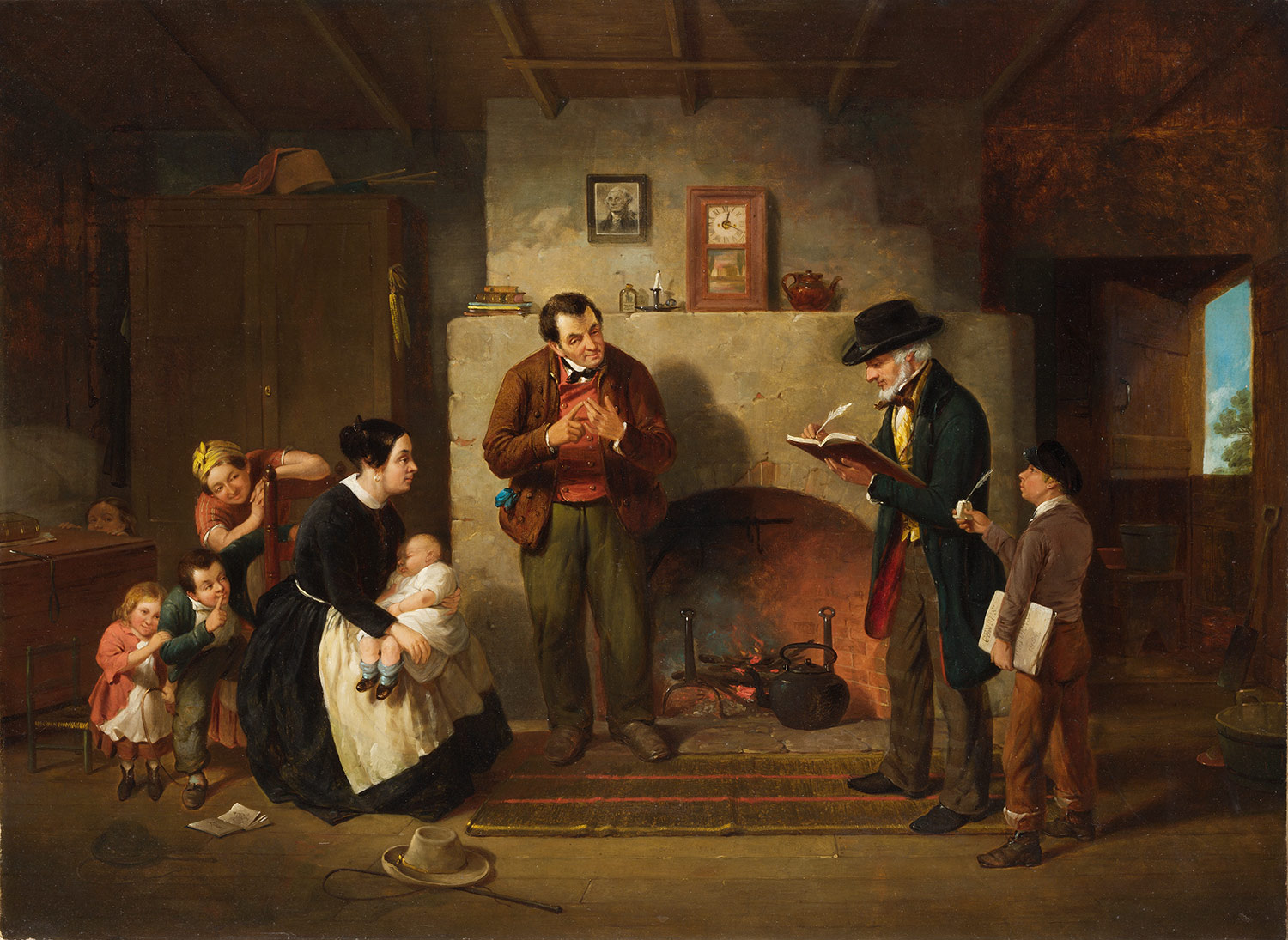Material culture: noun,
the aggregate of physical objects or artifacts used by a society.
In the realm of living history and reenacting there are different levels of enthusiasm, as is the same for most hobbies. However,
the realm of "living history" recreates a specific point in time. I have to say that to some, the material culture of a person/place/time has no impact on their impression. And in my opinion they could not be more wrong ( but I was an American Studies major). For example: Civil War Reenactors (I have the most knowledge of them-but you can sub any "military") will almost everything about the jacket they are wearing or the gun the are carrying- but when you ask them who they voted for or where they went to school- they give a blank look.
 |
| Taking the Census, Francis William Edmonds, 1854 |
The problem being that every soldier was a citizen- but not every citizen was a soldier. The items they used everyday before joining the military would be very familiar to them. Think about all of the things you use on a daily basis- blankets, cups, plates, napkins, clothing, food, farm equipment, lamps, etc. The list is almost endless, and while no one can expect to know about everything about a particular time period- the resources are available to familiarize oneself with at least some of these items.
Take a look at a few of these things-
 |
| Item 1 |
 |
| Item 2 |
 |
| Item 3 |
 |
| Item 4 |
How many of those items do you recognize? They are everyday items that most citizens in the 19th century would have at least have some working knowledge of.
Item 1- A tin reflector oven. Used to roast meat in the kitchen, these had been around for quite a while, and most folks would at least recognize one.
Item 2- A tea pot c. 1830. Who doesn't know how to use a tea pot?
Item 3- Ladies slippers. I will admit these are a bit "fancy" for any impression I have done recently, but the concept is the same- how many of us today know name brand shoes and styles though we are not able to wear them ourselves?
Item 4- A child's undergarment- commonly called a petti-chemise to combine a chemise & petticoat together. How many men know what a chemise even is in the living history world? Probably not as many that know what a slip is today. These are just a few examples of why all living historians should at least be familiar with some part of their own local culture. At least some national events that were in the news constantly.
Here is another little quiz- who is pictured in this political cartoon?
 |
| Louis Maurer cartoon, 1860 |
These are a few issues that can be addressed either on a local or national level. Like I said- take a morning and aquatint yourself with the items you use for your morning routine- do you know their period equivalents? Would have had access to them? During the war years would you have been able to afford them?

No comments:
Post a Comment